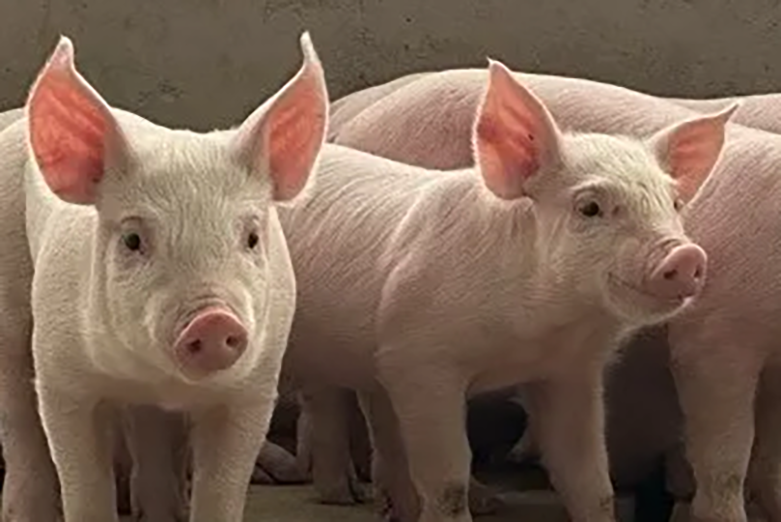Health status is one of four key drivers of wean-to-finish success. When pigs enter the farm healthy, this sets the stage for optimum performance through finishing. Three key pieces to maintain health are immunity management, production flow and disease surveillance.

Immunity management
The objective of immunity management is to promote competent immune system development, ensuring animals can endure infectious disease challenges. The early post-weaning phase is one of the most critical times for immune system development. Immunity management should minimize stressors, allowing pigs to adapt to their new environment while building immunity before encountering challenges in the next production stage.
Immunity management relies on having enough labor, the right skills and solid team communication.
Allocate enough labor: To provide small but critical adjustments in early pig care, and to identify potential health issues and manage them early before they become larger profit-impacting problems, staff your farms with an adequate number of quality workers.
“Upon arrival, weaned pigs will need vaccinations based on your veterinarian’s farm-specific vaccination strategy, careful observation and excellent early pig care,” explains Sebastian Casiro, Technical Services Manager UK. “This means allocating enough staff. Enough staff to ensure stress is minimized and carry out all the early pig care procedures and identify health issues as soon as possible.
If your team isn’t large enough, wean-to-finish herd health and immunity won’t be safeguarded. The small signs will get missed, the small adjustments won’t be made, and health problems will quickly develop.”
Skills development and training: Train staff in animal husbandry and basic treatment practices. Training will help develop skills to identify early clinical signs of disease and the use of a treatment decision tree.
“Trained staff with experience in early pig care – which consists of proper reception of pigs into the right environment, focused feed management, ensuring adequate water intake, and daily observation to identify fallback pigs – are critical to protecting pig immunity and health,” says Sebastian Casiro, Technical Services Manager UK. “Caretakers are your first line of defense in protecting health and immunity.
Once they develop the required skills, they will recognize early signs of disease before problems develop that require much larger intervention. Yes, it takes time and effort to raise the skill level of your caretakers, but this will result in better wean-to-finish herd health and immunity, which translates into efficient growth with lower costs for disease treatment and special care.”
Team communication: Good communication is another critical part of achieving excellence in herd health and immunity, says PIC Health Assurance Veterinarian Dr. Tim Snider.
“This starts with early identification of pigs showing signs of disease during the daily walkthrough and frequent and timely communication with the farm manager and veterinarian about the best course of action,” she explains. “It’s also important to have regular feedback channels to ensure appropriate implementation of intervention procedures and to evaluate the success of these procedures for future recommendations. Without effective communication among all team members, you are putting herd immunity and health at risk. With good communication, herd health is protected.”
Production flow
A single source flow is the most effective strategy to manage health statuses in growing pigs. When mixing weaned pig sources, it is important to take special precautions to mitigate risk.
When mixing flows, match the health status of the flows as close as possible. This means customized testing for the diseases of greatest concern for each system, some at the positive/negative result level, others at the strain or serotype level. “The better the diagnostic picture, the more knowledge you have about the endemic (existing) pathogens in terms of their type and virulence level,” says Dr. Snider. “We are talking about targeted testing by your veterinarian with well-defined goals in place. Use diagnostic results to make better-informed management or treatment decisions. Investing in targeted testing will pay off because you base your decision-making on a complete picture, and you won’t make mixing mistakes that can cost your operation substantially in treatment and care labor.”
Disease surveillance
Once weaned pigs are received, manage both existing disease and potential disease threats effectively and efficiently to achieve excellence in wean-to-finish health status. Diseases cannot be appropriately controlled or eliminated unless it’s known which diseases are present and how they behave within the population.
Tailor disease monitoring/surveillance to each production system based on farm history, regional disease challenges and so on. “This will inform which age groups of pigs to sample, what types of samples to take and what diagnostic tests to perform,” explains Sebastian. “The sample size and frequency of sampling will also be specific to your needs.”
The information generated or obtained by monitoring/surveillance programs will trigger actions within an overall strategic plan to control and/or eliminate pathogen(s) from the herd. These might include:
• Control vs. elimination
• Medication
• Vaccination
• Flow mixing decisions
• Depopulation-repopulation
“Targeted testing of source flow health status (if you mix sources) and targeted disease monitoring/surveillance of your wean-to-finish herd will ensure you minimize disease threats and control existing pathogens effectively,” says Sebastian. “Knowledge is key. A complete picture will enable you to keep your herd healthier while keeping cost down and improving performance.”




